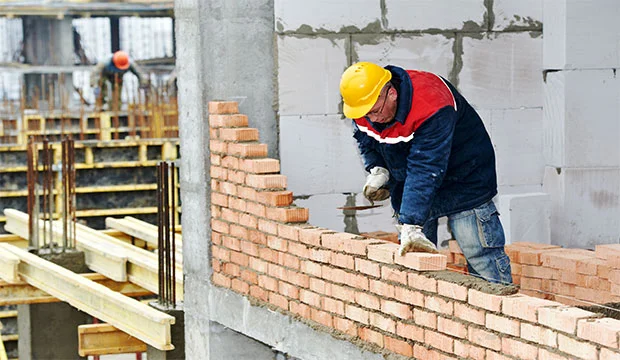A quality brick masonry work is built only when the type of material used, nature of workmanship and supervision in that construction are well organized. Inferior workmanship assisted by a lack of supervision may lead to unsound construction in spite of the materials used being of the best possible type. Despite the usage of standard construction components sometimes inferior workmanship conducted by lack of supervision may result to poor construction.
The common principles which should be maintained for a sound brick masonry construction are as follows:
- Use bricks of superior quality with the same colour, well burnt, with correct shape and size. They should not have any cracks or flaws.
- To prevent water absorption from the mortar before using the bricks in masonry, they should be soaked in clear water for 2 hours.
- While laying bricks on the mortar it should keep in mind that brick courses need to be laid perfectly horizontal and all vertical joints should be vertical.
- Brick wall construction should start from any end or corner of the construction worksite.
Recommended Download For Brick Masonry Professionals
- The entire masonry task has to be kept drenched for at least a week.
- Wall verticality should be guaranteed by plumb-bob checking every now and then.
- Mortar should be used in accordance with the specification.
- After the work completion, brick masonry should be left with the toothed end.
- The usage of brickbats should be ignored.
- Walls should be constructed uniformly and systematically. In case if there is any kind of difference between adjoining walls the problem surely arises.
- There is a limitation (not more than 1.5m in a day) of the wall raising quantity in the brick masonry also.
- When the mortar is green, the facet joints should be raised to a depth of 12 to 20 mm to get the suitable key for plastering or pointing. If plastering or pointing is not to be provided, face joints should be stuck flush and finished with proper syntax.
- Holdfasts for doors and windows should be embedded in brick masonry with cement mortar or concrete, at the time of constructing the wall itself.
- Bed blocks of stone, concrete or reinforced concrete should be offered at the heavy loads carrying beam’s end.
- Brick masonry should be cured for consecutive two weeks.
- Only single scaffolding should be used for producing higher level brickworks.


